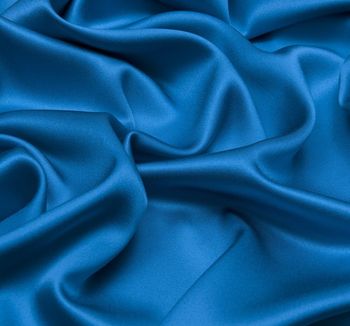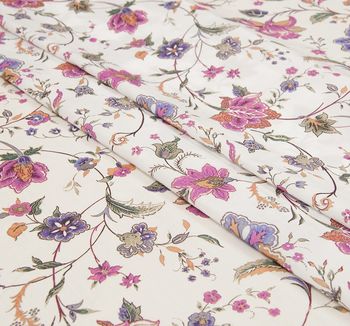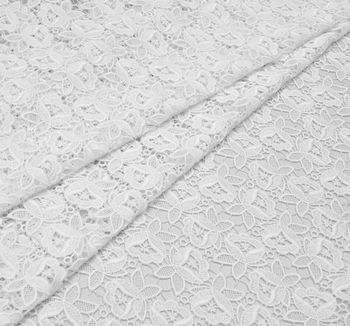Silk is a timelessly trendy natural fabric woven from the cocoons of silk worms. The world’s most famous fashion brands regularly apply it for various men’s and women’s outfits earning the admiration of the audience.
Knit Fabric – Characteristics and Designs
Knit fabric is an elastic material, made by yarns initially formed into loops and then interconnected in order to produce a textile structure. Knit fabrics do not have a weave. However, the system of weft and warp threads, traditional for other fabric types, is preserved. The feature of knitwear is that it can stretch as you like due to the loops, which can change the size and shape.
The main raw materials for knit fabrics are silk, linen, cotton, wool, viscose, rayon and more. Manufacturers add various synthetic materials to achieve the best combination of quality and durability.
Let’s talk about types and uses of knit fabrics, pros and cons, trends and life hacks which help you make a dress or sweater you long dreamed of.
What Are the Types of Knit Fabrics?
There are two main ways of manufacturing of knit fabrics: warp knitting (vertical set of yarns) and weft knitting (horizontal set of yarns).
The ways differ with the process of knitting. In warp knitting, each thread has its needle and the fabric is knitted in the lengthwise direction (vertically). Weft knitted fabrics are made of one thread interlocked horizontally.
Here are the most popular types of knitted fabrics:
Warp knitted fabrics:
- Raschel. The fabric has an openwork pattern and three-dimensional surface effect.
- Tricot. The fabric is a mix of natural and synthetic materials. It features lengthwise ribs on the right side and crosswise ribs on the wrong side. Tricot knit fabric is soft and has good drapability.
- Milanese knit. The fabric is knitted diagonally from two sets of yarns. It is soft, lightweight and run-resistant.
Weft knitted fabrics:
- Jersey or plain stitch. It has two different sides with vertical ribs on the right one and horizontal ribs on the wrong side. The fabric curls towards the right side. Jersey is the most popular type of knit fabrics due to a variety of colors, patterns and useful consumer properties – it is comfy, soft and stretchy.
- Interlock. Unlike jersey, both sides of interlock knit are with lengthwise ribs and look the same way. The fabric features good shape retention, medium or heavy weight, smooth texture.
- Rib. It has visible vertical ribs on both sides. The fabric features a perfect crosswise stretch and a soft feel.
- Purl. The fabric is double-faced and has 2-way stretch (crosswise, lengthwise). It features knit and purl stitches which form columns, going along the length of the fabric.
| Type of knit | Name | Uses |
|---|---|---|
|
Raschel |
warp |
dresses, blouses, underwear, coats, finishing |
|
Tricot |
warp |
lingerie, swimwear, lining, sleepwear |
|
Milanese knit |
warp |
scarfs, sweaters, cardigans |
|
Jersey |
weft |
dresses, skirts, tops, underwear, pajamas, t-shirts |
|
Interlock |
weft |
fitting dresses, leggings, cardigans, shirts |
|
Rib |
weft |
turtlenecks, cuffs, cardigans, sweaters, neckbands |
|
Purl |
weft |
outerwear, sweaters |
Jersey Knit Fabric
Jersey knit fabric is a single knit fabric, made of natural (cotton, wool, viscose, linen, silk) or synthetic fibers. The main advantages of jersey knit fabric are versatility, wrinkle resistance, durability, softness and elasticity. That’s why jersey is an extremely popular cloth for men, women and child’s wear.
Jersey knits boast a wide range of colors. Here is our top fashion color guide for this season. Ultra-violet is a must-have; it is the color of the year. The classic palette includes navy, grey, beige and white colors. Festive hues include juicy yellow, rich red, emerald green, sky blue, pink lavender, beige-pink, and hocolate brown.
Сotton Knit Fabric vs Viscose Knit Fabric
Cotton knit fabric is one of the types of knit fabrics. With a flexible drape and soft feel, it is a perfect material for sewing dresses, wide trousers and kilts. Among the pros of cotton knits are breathability, absorbency and versatility – it is an all-season material. However, cotton knit fabric does not keep the shape well and is able to overstretch.
Viscose knit fabric is a material knitted from viscose fibers. Longwearing and breathable, this fabric retains the shape well at the expense of its weight. With a great drapability and considerable stretch effect, viscose knit fabric is perfect for dresses and skirts, as well as for jackets and trousers.
Pros and Cons of Knit Fabrics
Knit fabrics have gained wide popularity due to their advantages, as well as attractive price and simple care requirements. Let's name the basic pros of knit fabrics:
Pros:
- Comfortable to wear. Knit fabrics have a soft texture and great breathability. In the hot season, knitted garments allow the body to breathe, in cold weather, on the contrary, keep you warm.
- Fabulous stretch. Knitwear can stretch in all four directions. You can create a form-fitting wear, which does not constrain movement. Knitted garments take the shape of a human body.
- Versatility is the main reason that this fabric is in great demand. Manufacturers use various types of knitting to create underwear, T-shirts, dresses, tunics, trousers, shirts, dressing gowns and more. Products made from knit fabric can be thin, airy, warm and cozy.
- Easy to care. Knitwear is wrinkle-resistant and durable, it does not lose the shape and color for a long time.
However, there are some cons:
- Prone to pilling. The best way to keep original appearance of garments is dry-cleaning. Knit fabrics with synthetic fibers are the most resistant to pilling and have a sufficiently dense and elastic structure.
- Not easy to sew. Knitted fabrics have a raveling edge; it is hard to work with seams.
- Choose silhouette properly. It is very topical for close-fitting dresses and skirts. Be careful, choose garments which suit you and emphasize advantages of your figure.
5 Tips for Sewing with Knit Fabric
Here are the life hacks how to sew a garment from knit fabric with a regular sewing machine.
- Needles. First of all, you will need a special needle – ballpoint. The problem is that if you use a regular needle, it will make holes in your knit fabric. Double or twin needle will be an ideal choice for sewing with knit fabrics.
- Use a Walking Foot. Without this device, the sewing machine pulls only the bottom layer of fabric. The Walking Foot pulls the top layer of fabric with the bottom either.
- Cut on a Surface. All the fabrics should be cut on a table or floor, without hanging edges. Remember, knit fabrics have a stretch. With edges hanging you can make a mistake while cutting.
- Zig-Zag Stitch. It is highly recommended for knitwear when sewing seams, because a zig-zag stitch stretches along with the fabric, unlike a straight stitch.
- Tissue Paper. Use it to connect the edges when sewing them up to prevent the fabric from stretching. Tissue paper is applied underneath the seam (or on the top) when sewing two layers of knit fabric and removed after finishing the process.
Knitwear Trends 2018/2019
“ Knitwear can play a vital part in layering. The simplicity of a lightweight cardigan makes it one of the best ways to layer outfits. I love granddad cardis for winter, worn over a vintage lace shirt, waistcoat and full skirt with slouchy boots.” — legendary model Twiggy gave a fashion advice how to combine knitwear with your wardrobe.
Knit fabric garments have long been a part of our everyday life. Fashion designers tend to add knitted wear to their collections.
Here are the top-5 fashion trends in the 2018/2019 season.
- Colors: the main colors are classic black, grey, beige, brown which supplement juicy colors (red, purple, neon hues).
- Accessories: knitted scarfs and large shawls.
- Style: loop stitch cardigans and jackets, faux fur, knitted dresses and skirts.
- Oversize silhouettes: volumetric sweaters, turtlenecks, coats.
- Patterns: geometric patterns, ethnic prints, art-inspired motifs.
Tissura Collection
In our store, you can buy online knit fabrics made of wool, silk, cotton, cashmere, perfect for a stunning dress, cardigan and more. There is an impressive collection of jersey knits – from medium weight to heavy, from solid to sophisticated patterns, from classic to juicy shades.
Tissura offers high quality knit fabrics from leading European manufacturers such as:
- Guigou (France)
- Carnet (Italy)
- Mario Boselli (Italy)
- Loro Piana (Italy)
- Liberty (Great Britain)
- Hausammann (Switzerland)
- Etro (Italy)
- Binda (Italy)
You can buy online exclusive knit fabrics in a wide range of colors and prints to make a trendy addition to your wardrobe.
Knitted Fabric, 38 € (47 US$) per one running metre;
Wool Jersey Knit Fabric, 86 € (106 US$) per one running metre;
Wool Jersey Knit Fabric, 86 € (55 US$) per one running metre;
Stretch Jersey Knit Fabric, 47 € (58 US$) per one running metre
How to stay cool on a hot summer day? Wear fabrics built for the heat. Cotton, linen, viscose, silk – there are dozens of summer-friendly materials you can choose for your wardrobe. The best fabric to opt for when the temperature rises should be breathable and comfortable.
The wedding dress is one of the most important clothing items a woman gets to choose in her lifetime. It can be made of silk or cotton, lace or tulle, be strewn with sequins or embroidered with beads.
.jpg)
.jpg)
.jpg)
.jpg)


